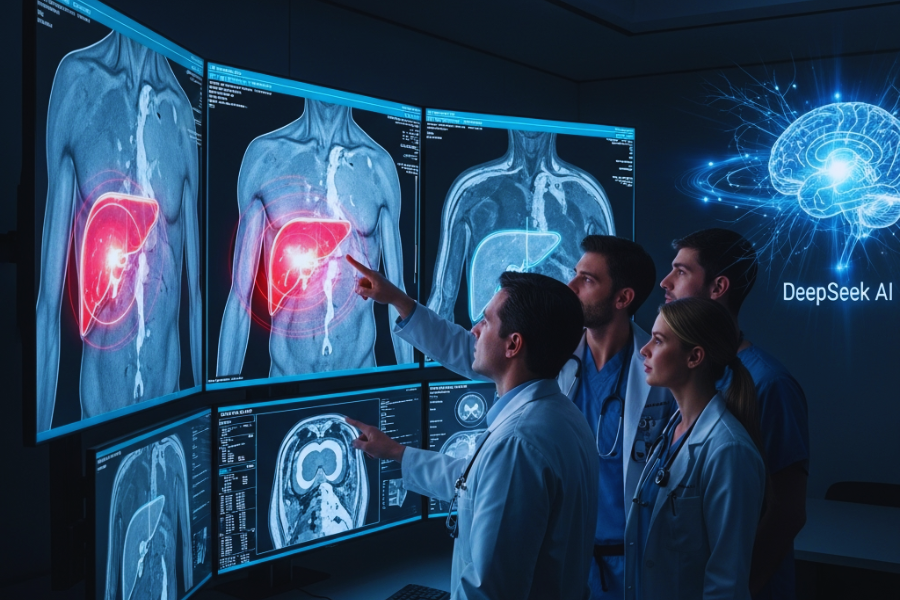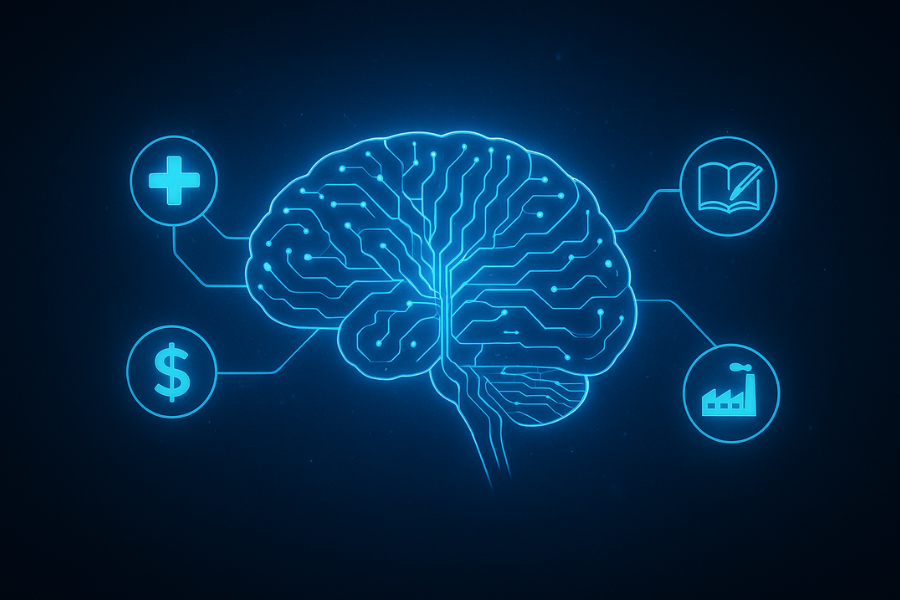Introduction
Hospitals worldwide are under immense pressure—rising patient volumes, staffing shortages, and the growing complexity of diagnostic imaging make timely, accurate care a challenge. Artificial Intelligence (AI) is stepping in to help, but its success depends not only on accuracy but also on efficiency, ethics, and trust.
DeepSeek, already recognized for its cost-efficient, self-optimizing AI models, is now demonstrating how these innovations can transform healthcare. By partnering with hospitals and research institutions, DeepSeek is proving that AI can reduce diagnostic workloads, support clinical decision-making, and operate under strict ethical governance frameworks.
AI in Diagnostics: Why Efficiency Matters
Modern diagnostics rely heavily on imaging—CT scans, MRIs, X-rays—and processing this data is resource-intensive. Conventional AI solutions often require cloud-scale infrastructure, which raises costs and limits deployment in smaller or rural hospitals.
DeepSeek approaches the problem differently:
Efficient models: Designed to run on modest hospital hardware rather than expensive GPU clusters.
Self-optimizing performance: Adapts to local data, learning from hospital-specific workflows without retraining from scratch.
Scalable adoption: Enables both large urban centers and smaller clinics to benefit.
This means a rural hospital can access the same AI-powered diagnostic support as a top-tier research hospital—closing the gap in care delivery.
Real-World Diagnostic Applications
Radiology Support
DeepSeek’s models assist radiologists by highlighting potential anomalies in scans—such as nodules in lungs or subtle fractures—while generating structured reports. Instead of replacing experts, the AI acts as a second set of eyes, catching what busy clinicians might miss.Emergency Room Triage
In trauma or stroke cases, every second counts. DeepSeek’s lightweight models can rapidly analyze CT or MRI scans, prioritize critical cases, and alert physicians immediately. This reduces door-to-treatment time, which is directly linked to patient outcomes.Pathology Assistance
Digital pathology slides can contain billions of pixels. DeepSeek streamlines this by pre-screening slides, flagging regions of concern, and providing probability scores. Pathologists can then focus on the most urgent cases first.Bedside Monitoring
By integrating multimodal inputs—wearable vitals, patient speech, and imaging—DeepSeek supports real-time monitoring. For example, irregular breathing patterns or sudden neurological changes can trigger automated alerts for intervention.
Ethical Governance in Healthcare AI
While efficiency and accuracy are critical, healthcare AI must also operate under strict ethical guidelines. DeepSeek has prioritized governance in its hospital deployments, focusing on:
Patient Privacy: On-device or local processing ensures sensitive imaging data doesn’t always need to leave hospital servers, reducing exposure risks.
Transparency: Diagnostic suggestions are accompanied by explainable reasoning—why a scan region was flagged, what features contributed to the result.
Bias Mitigation: Models are tested against diverse datasets to reduce diagnostic disparities across age, gender, and ethnicity.
Human-in-the-Loop: Final clinical decisions remain with physicians; AI serves as support, not substitution.
Audit Trails: Every AI recommendation is logged, creating accountability for both clinicians and the technology.
This combination of efficiency and ethics ensures that AI adoption strengthens, rather than undermines, patient trust.
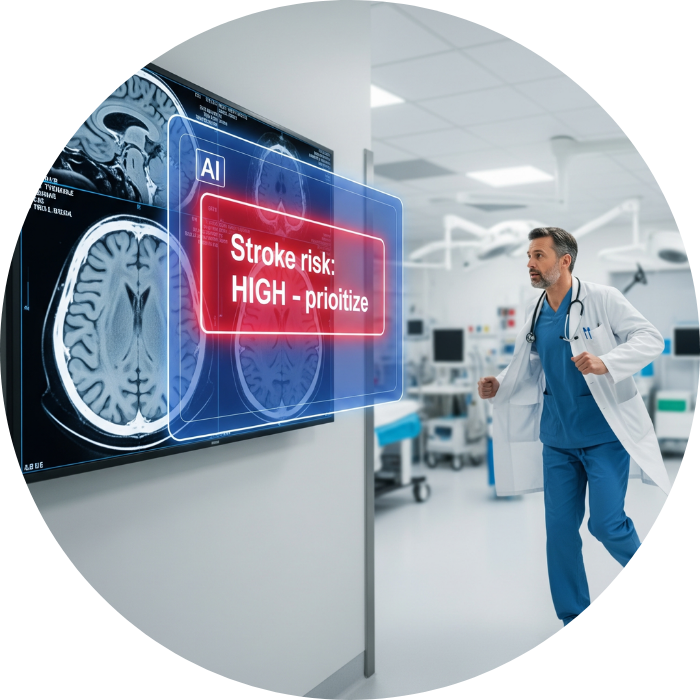
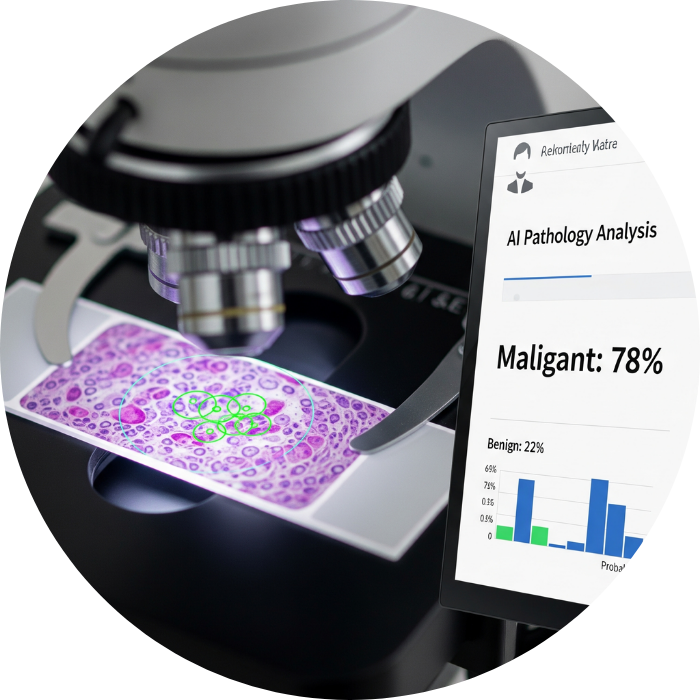
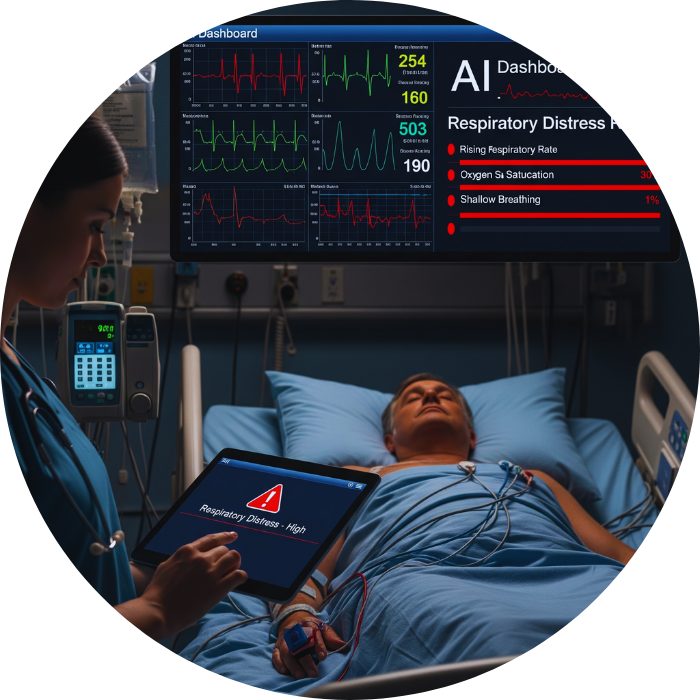
High-Impact Case Studies
Stroke Centers: Hospitals using DeepSeek AI reported reduced diagnosis-to-treatment time by up to 20%, improving recovery outcomes.
Rural Clinics: In pilot projects, clinics without full-time radiologists used DeepSeek’s lightweight AI to flag urgent cases and connect with remote specialists.
Cancer Screening: Early deployments in oncology have shown promising results in detecting early-stage tumors, where human fatigue often contributes to oversight.
These pilots underscore that DeepSeek is not just theoretical—it’s saving lives today.
Why DeepSeek’s Hospital Model Stands Out
Cost-Efficient Deployment – Works on standard hospital IT infrastructure, avoiding costly GPU upgrades.
Adaptive to Local Context – Learns from each hospital’s patient demographics and workflows, improving over time.
Ethics at the Core – Built-in privacy safeguards and governance mechanisms make it easier to meet regulatory standards.
Collaborative Role – Designed to support doctors, not replace them—ensuring clinical trust and acceptance.
Challenges Ahead
Regulatory Hurdles: Each country has different medical device approval processes (e.g., FDA in the U.S., NMPA in China, EMA in Europe). Navigating these is complex.
Data Quality: AI is only as good as the data it trains on. Inconsistent hospital records or low-quality imaging can limit model performance.
Clinician Training: Doctors need training to interpret AI outputs correctly and integrate them into daily workflows.
Scaling Governance: Maintaining strict ethical safeguards across thousands of deployments is a non-trivial challenge.
DeepSeek and its hospital partners are addressing these issues with iterative pilot programs and governance-first deployment models.
Conclusion
AI in healthcare is not just about accuracy in a lab setting—it’s about delivering real-world diagnostic support under ethical guardrails. DeepSeek’s collaboration with hospitals shows how efficiency-first, self-optimizing models can lower costs, increase diagnostic speed, and broaden access to care.
At the same time, its emphasis on ethical governance—privacy, explainability, fairness, and accountability—sets a standard for responsible AI in medicine.
In the coming years, the impact of AI in hospitals will not be measured only by technical benchmarks but by how well it improves patient outcomes while safeguarding trust. With its focus on cost-efficiency and ethics, DeepSeek is well-positioned to become a blueprint for the next generation of healthcare AI.
-Futurla




